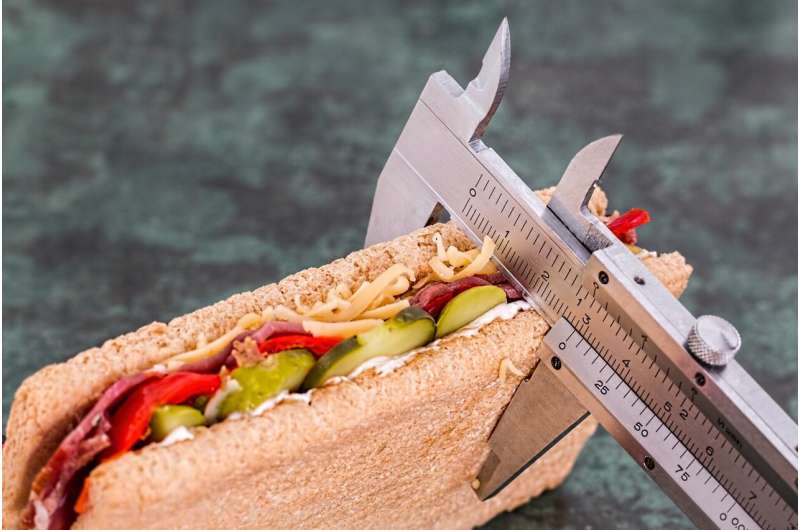This article has been reviewed according to Science X's editorial process and policies. Editors have highlighted the following attributes while ensuring the content's credibility:
fact-checked
trusted source
written by researcher(s)
proofread
What your sad desk sandwich says about your working habits

How's that sandwich? If you're munching on a supermarket meal deal while reading this, well, I probably am too.
Brits in particular are known for their obsession with sandwiches, which they eat alone while continuing to work. This habit amuses but also disgusts our European counterparts. As one French scholar put it: "A sandwich or salad gulped down in front of a computer screen does not pass as a proper meal."
Research has shown that 28% of British workers eat at their desks and 44% eat lunch alone, the highest rates in Europe. Sociologists have thoroughly researched family meals, children's school meals, and even dining out in restaurants.
Only a handful of publications focus on the workday lunch, but studies have almost exclusively used large-scale surveys. While these are valuable in revealing patterns of behavior and trends in how we eat, they do not help us understand why people eat the way that they do at lunch. For this, rich, in-depth interview data is required.
In my recently published research, I interviewed 21 people about what they ate for the workday lunch (and where and with whom). I found much greater variety in workday lunches than the solitary "al desko" sandwich. But there were shared understandings among my participants about how to lunch at work.
Most participants were willing to admit that the workday lunch was not exactly a premium gastronomic experience. One man described lunch as "my functional eating thing".
Nevertheless, people greatly anticipated their lunch, seeing it as a reward or treat for a morning's work, and noting that it was a time to eat what they wanted. One respondent, a teacher, confessed that she chose "carbs with carbs" and a cookie with custard from the canteen.
Unlike the family dinner where everyone tends to eat the same meal and the cook must cater to others' tastes, the workday lunch was seen as a chance for personal indulgence, despite others' distaste. Foods considered unacceptable in other circumstances (canned soup or microwave meals, for example) are acceptably convenient for the workday lunch because they are efficient. Couples I interviewed ridiculed each other for their "sad" or "terrible" lunch choices.
Efficient eating
My participants considered walking and waiting for food a waste of time. People reported using work breaks for a leg stretch and to buy lunch but, to minimize time away from work, ate back at their desks. Proximity and speed of service are deciding factors in where to eat out for lunch: you want to "go, eat and leave".
And while it was not common among participants, the temporally efficient lunch par excellence is bringing food from home—you skip the queue altogether (not literally, Brits don't like that).
As far as dining companions are concerned, there were mixed feelings among my participants. Eating with colleagues can be a good laugh peppered with lighthearted British banter and discussion of weekend plans. Sometimes though, being a good conversation partner and navigating the blurred line between friendly and professional with colleagues was seen as just more work.
To avoid the emotional effort of eating with others, people would signal to their colleagues they wanted to be left alone by sitting by themselves and scrolling on their phones, hiding behind a computer screen or even retreating to a parked car to eat without disturbance. One woman summarized, "Eating with other people interferes with that kind of pleasure of just looking after yourself".
Lunch and our working lives
My findings suggest that British lunch habits are not simply a matter of low standards for meals. They are about balancing the pressures of work and the need for efficiency with taking care of oneself and navigating social interactions. Like quiet quitting and the great resignation, putting minimal effort into lunch can be seen as yet another response to a working culture that is getting more demanding.
I conducted these interviews before the COVID pandemic. The rise in hybrid and remote working has, for many people, moved the workday lunch from the office to home. The commercial sandwich trade has been hit hard. But even before the pandemic, participants who worked from home ate at their desks, despite (you might expect) having a more pleasant space to eat. Perhaps the impact of the pandemic on our lunches is not so dramatic after all.
What we eat for lunch every day (and how we eat it) has an impact on our health. Some organizations and countries have recognized the importance of this. France, for example, has a labor regulation that bans workers from eating lunch in the workplace. Long lunches among French workers are linked to better food choices and health.
Improving lunchtime habits, therefore, is not necessarily down to whether you choose a salad or a slice of pizza. Your employer, through lower workload, or even the government, through labor laws, may have an influence on what's for lunch.
Provided by The Conversation
This article is republished from The Conversation under a Creative Commons license. Read the original article.![]()





















